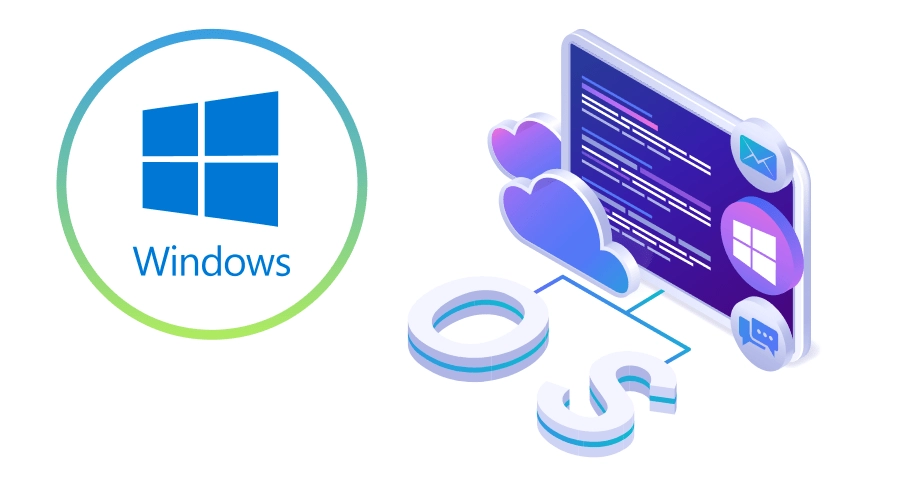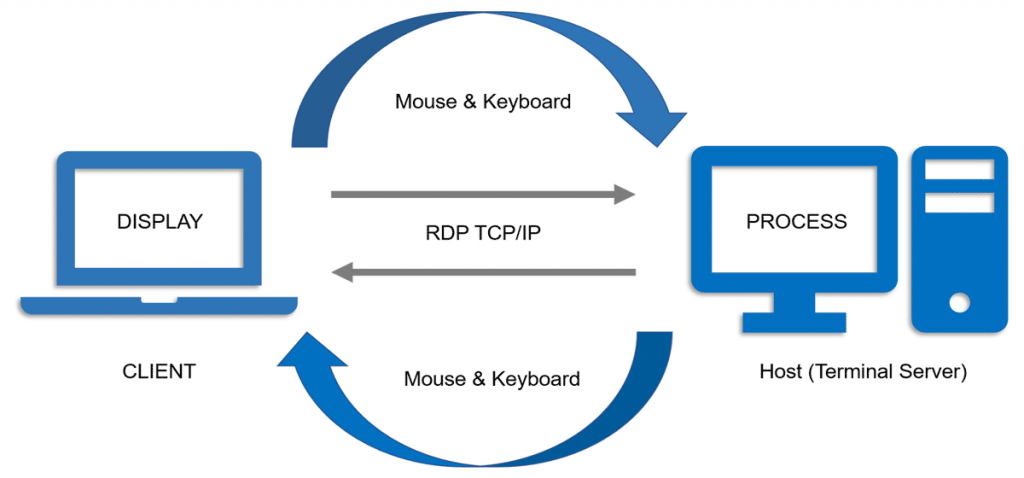Table of Contents
- Introduction
- What is a Windows VPS?
- Key Parameters for Choosing a VPS
- Tips for Choosing a VPS
- The Importance of SSD in Windows VPS
- Setting Up and Connecting to a Windows VPS
- Conclusions
Introduction
Hi there! If you’re considering a reliable Windows-based hosting solution, this article is for you. We’ll delve into how to choose the right Windows VPS, highlight the most important parameters, and point out key considerations when searching for the perfect option. We’ll discuss core concepts such as Windows VPS hosting, Windows VPS server, and options with pre-installed operating systems – VPS with Windows. We’ll pay special attention to the advantages of using solid-state drives, or Windows VPS SSD, which have become the standard for ensuring high server performance.

In today’s business and web development world, choosing the right server can be a decisive factor in your project’s success. Much depends on speed, reliability, and security. We’ll explore all the nuances, starting with what a Windows VPS is, what key parameters to consider, and tips to help you make the right choice.
What is a Windows VPS?
A Windows VPS is a virtual private server running the Windows operating system. This server gives you access to the full capabilities of the Microsoft ecosystem, which is especially relevant for applications requiring specific configurations and software optimized for Windows. Unlike Linux VPS, where most solutions are based on open-source, Windows VPS is often used for tasks requiring full compatibility with Microsoft software, whether it’s ASP.NET applications, MSSQL, or specialized enterprise software.
When choosing Windows VPS hosting or a Windows VPS server, it’s important to understand that you’re not just getting a virtual machine, but a full-fledged working environment with all standard Windows tools. This is especially convenient for those accustomed to working in their familiar operating system and wanting to take advantage of all its benefits without needing to configure emulators or compatibility layers.
Key Parameters for Choosing a VPS
When choosing a Windows VPS, several key factors must be considered to ensure stable, fast server operation and security. Below are the main parameters to look at:
- Processor (CPU): A powerful processor with many cores provides high performance and allows for handling numerous tasks simultaneously. When choosing a Windows VPS, it’s recommended to opt for modern CPUs capable of handling high loads.
- Random Access Memory (RAM): For most server tasks, 4 GB of RAM is optimal, but more demanding applications may require 8 GB or more. Sufficient RAM guarantees smooth application operation and system stability.
- Storage (SSD): SSDs significantly speed up operating system and application loading, which is crucial for servers where every second counts. Using a Windows VPS SSD provides minimal response times and increased reliability compared to traditional HDDs.
- Bandwidth and Network: A high-speed internet connection and stable network connectivity are essential for successful VPS operation, especially if the server is used for hosting websites or high-traffic applications.
- Windows License: Check if the server cost includes a Windows operating system license. This significantly impacts the total cost, as purchasing a license separately can be expensive.
- Scalability: The ability to increase server resources in the future (add RAM, increase disk space, etc.) is important, especially if your project is expected to grow.
- Support and Uptime Guarantee: Reliable technical support and a guaranteed high uptime are crucial in today’s business environment.
Considering these parameters, you can choose the optimal solution that meets both your current and future project requirements.

Tips for Choosing a Windows VPS
When choosing a Windows VPS, here are some helpful tips to avoid mistakes and make the right choice:
- Analyze Reviews: Before purchasing, read other users’ reviews of the provider. This helps understand the quality of service and avoid unpleasant surprises.
- Trial Period: Many providers offer trial periods to evaluate server performance and functionality. Use this opportunity to ensure the chosen solution meets your expectations.
- Customer Support: Pay attention to the quality of technical support. 24/7 support, prompt responses to requests, and professional consultations are important aspects affecting your work in case of problems.
- Value for Money: An inexpensive VPS doesn’t always mean the optimal solution. Find a balance between cost and resources provided, especially for critical applications.
- Configuration Flexibility: The ability to easily scale the server and configure it for specific tasks is a key criterion when choosing a business solution.
- Licensing Terms: Ensure the plan includes a Windows license. If you choose a VPS with Windows, having a license saves you additional costs and installation difficulties.
By following these tips, you can choose a VPS that not only meets your technical requirements but also provides a solid foundation for your project’s growth.

The Importance of SSD in Windows VPS
One of the most significant parameters when choosing a Windows VPS is the type of disk storage. SSDs provide high read and write speeds, directly impacting server performance. Choosing a Windows VPS SSD offers the following advantages:
- Instant System Response: Fast operating system and application loading reduces wait times during operations.
- Increased Reliability: SSDs have a lower probability of mechanical failures, ensuring stable server operation.
- Efficient Database Operation: High input/output speed is especially important for servers hosting resource-intensive applications and databases.
- Time Savings: Fast data access speeds up various tasks, crucial for businesses and web applications with many requests.
In today’s fast-paced world, choosing an SSD solution is not just desirable but necessary for ensuring high performance and stable operation of a Windows VPS.

Setting Up and Connecting to a Windows VPS
After choosing and purchasing a suitable server, the next step is setting it up and connecting. Connecting to a Windows VPS is primarily done via RDP (Remote Desktop Protocol). Let’s look at the main steps:
Step 1. Obtaining Connection Details
After placing your order, the provider will send you information including the server’s IP address, username, and password. This information is necessary to establish a remote connection.
Step 2. Connecting via RDP
To connect to the server, open the «Remote Desktop Connection» application (mstsc) on your computer and enter the received IP address:
mstsc /v:your_vps_ip
After entering your credentials, you’ll gain access to the Windows desktop running on the remote server. This allows you to work with the server as if it were right in front of you.
Step 3. Initial Windows VPS Configuration
After connecting, it’s recommended to perform the following actions:
- Run Windows Update and install all important updates.
- Install necessary drivers and software for optimal server operation.
- Configure the firewall and antivirus to protect against external threats.
- Back up important data and settings.
These steps help ensure the security and stability of your VPS and allow you to use its capabilities effectively for any task.
«Innovation distinguishes between a leader and a follower.» — Steve Jobs
Conclusions
This article detailed how to choose a Windows VPS correctly, considering all the main parameters and nuances to ensure your project’s stable operation. We learned that a Windows VPS is not just a virtual server, but a complete working environment ideal for running applications and services requiring the Windows operating system.
Key factors when choosing include processor performance, RAM capacity, using SSDs to increase speed (especially important when choosing Windows VPS SSD), reliable network connectivity, and licensed software. We also covered tips to avoid mistakes when choosing and configuring the server to meet current and future needs.
A comparison of providers shows that the market offers many options, each with strengths and weaknesses. When choosing, always consider your project’s individual needs and pay attention to user reviews and the quality of technical support.
Hopefully, this guide helps you make an informed choice and configure your Windows VPS for optimal results. If you have questions or want to share your experience, leave comments—I’m always happy to communicate and exchange knowledge. Good luck working with Windows VPS hosting, Windows VPS server, and VPS with Windows!





